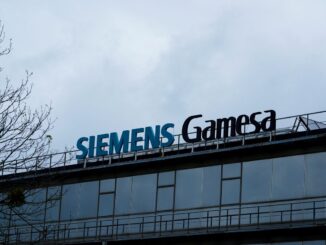
Global transformer shortages are threatening the energy transition (and stability of aging legacy grids)
“There hasn’t been a focus on investing in the supply chain for making transformers over the past 20 years, and shortages are likely to get worse. “That’s really coming… pic.twitter.com/OAErP5xF8C
— Kathryn Porter (@KathrynPorter26) June 5, 2025
The Crisis at a Glance
-
Extended Lead Times: Delivery times have ballooned from 50 weeks in 2021 to 120–210 weeks in 2024, with distribution transformer prices up 4–9 times pre-2022 levels.
-
Aging Fleet: Most transformers are 38 years old, nearing their 40-year lifespan, requiring mass replacements.
-
Demand Surge: Electricity demand is forecast to grow 2% annually through 2050, with a 13–16% increase by 2030 due to EVs, data centers, and renewables.
-
Supply Chain Woes: Only 20% of transformers are made domestically, with 80% of LPTs imported. Limited grain-oriented electrical steel (GOES) production and labor shortages exacerbate the issue.
Who’s Manufacturing Transformers?
-
Virginia Transformer Corporation: The largest U.S.-owned manufacturer, producing distribution and power transformers, recently expanded with a new facility.
-
Siemens Energy: Building a $150 million LPT plant in Charlotte, NC, to produce 24–57 units annually.
-
Hitachi Energy: Committing $500 million to U.S. manufacturing by 2027, part of a $1.5 billion global plan, with expanded facilities in Canada.
-
Prolec GE: Investing $85 million in a Monterrey, Mexico, plant for pad-mount transformers and $29 million in Shreveport, LA, for renewable energy units.
-
Schneider Electric: Spending hundreds of millions on capacity and smart transformer R&D.
-
ERMCO: A Tennessee-based distribution transformer manufacturer, scaling up production.
-
Sunbelt Solomon: Expanding repair and recycling to extend transformer lifespans.
-
Cleveland-Cliffs: The sole U.S. GOES producer, critical for transformer cores, but supply is limited.

How Many Transformers Do We Need?
-
Current Inventory: 60–80 million transformers, with 3 terawatts capacity.
-
Replacements: 60–80% of transformers (36–64 million) need replacing by 2050, or 1.2–2.1 million annually. In 2025, expect 1.2–1.5 million replacements.
-
New Demand (2025–2030): A 13–16% demand increase by 2030 requires 390–480 gigawatts of new capacity, equivalent to 9.75–12 million distribution transformers (at 40 kVA each) or 9,750–12,000 LPTs (at 40 MVA each).
-
Annual Needs (2025): Combining replacements and 2% demand growth, the U.S. needs 1.5–2 million transformers, including 300,000–500,000 for new demand.
-
Weather Impacts: 60,000–80,000 units annually replace storm-damaged transformers, with hurricanes like Helene (2024) highlighting vulnerabilities.
Investments to Meet Demand
-
Siemens Energy: $150 million for the Charlotte LPT facility, creating 559 jobs and boosting domestic LPT supply.
-
Hitachi Energy: $500 million for U.S. expansion, focusing on power and distribution transformers.
-
Prolec GE: $114 million ($85 million in Mexico, $29 million in Louisiana) for renewable and distribution transformers.
-
Schneider Electric: Hundreds of millions for capacity and IoT-enabled transformers, including $23.8 million in South Carolina.
-
Federal Support:
-
Defense Production Act (2022): Prioritizes domestic production, with unspecified funding.
-
Proposed $1.2 Billion: Industry groups seek 2024 congressional funding for manufacturing, GOES, and workforce development.
-
The Plan to Bridge the Gap
-
Boost Domestic Production:
-
Offer tax credits and grants via the Inflation Reduction Act to fund new plants.
-
Subsidize Cleveland-Cliffs and new GOES producers to secure core materials.
-
Fast-track permitting for manufacturing facilities.
-
-
Strengthen Supply Chains:
-
Create a federal “virtual strategic reserve” to guarantee demand, encouraging investment.
-
Promote long-term utility-manufacturer contracts for stable production.
-
Reduce reliance on non-allied imports (e.g., China) while leveraging allies like Canada.
-
-
Build Workforce Capacity:
-
Fund vocational training for transformer manufacturing and engineering.
-
Partner with trade schools to address labor shortages.
-
-
Innovate and Recycle:
-
Develop modular transformers to streamline production.
-
Invest in solid-state transformers for efficiency and scalability.
-
Expand Sunbelt Solomon’s recycling to refurbish 10–20% of aging units.
-
-
Enhance Forecasting and Resilience:
-
Refine NREL’s demand models with utility input.
-
Bolster “storm stock” reserves and mutual aid networks for rapid outage response.
-





